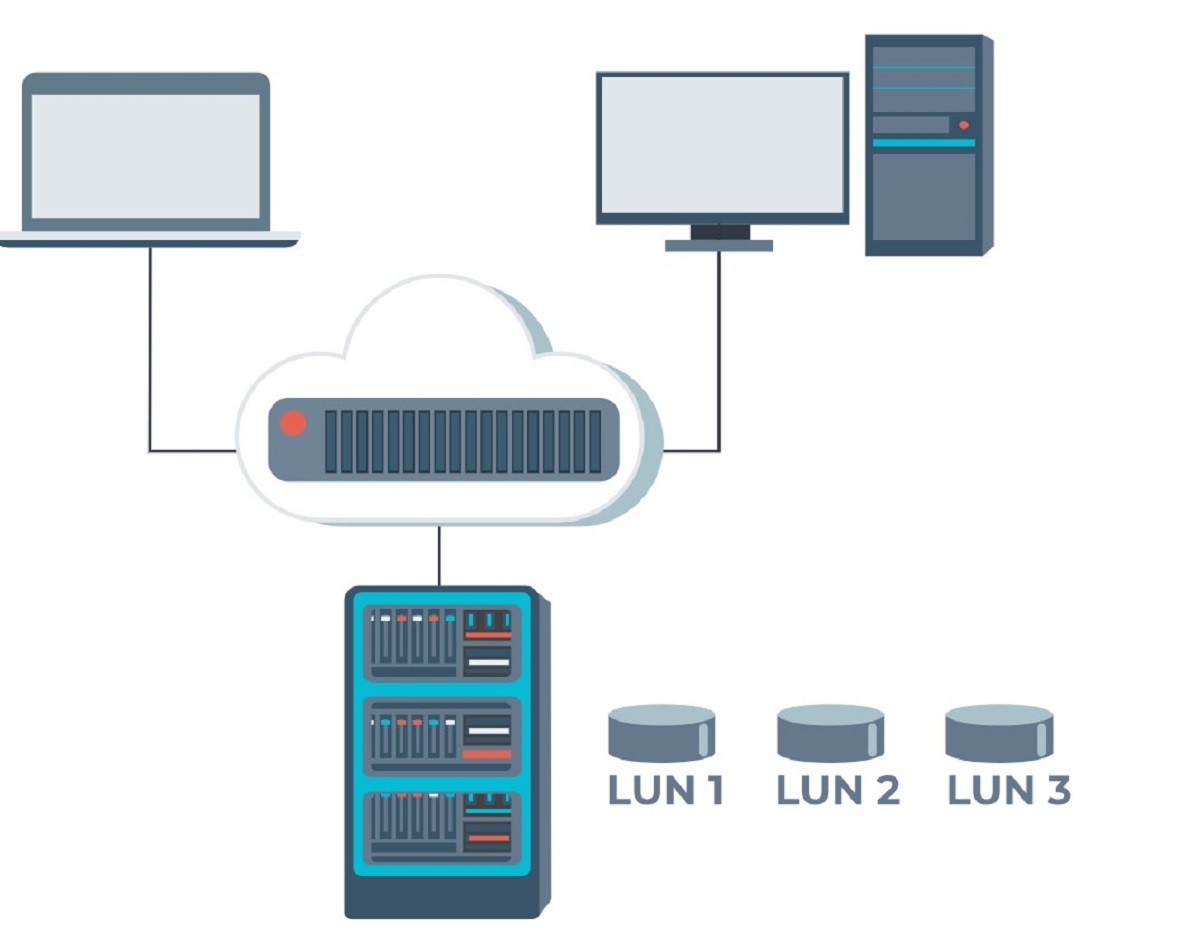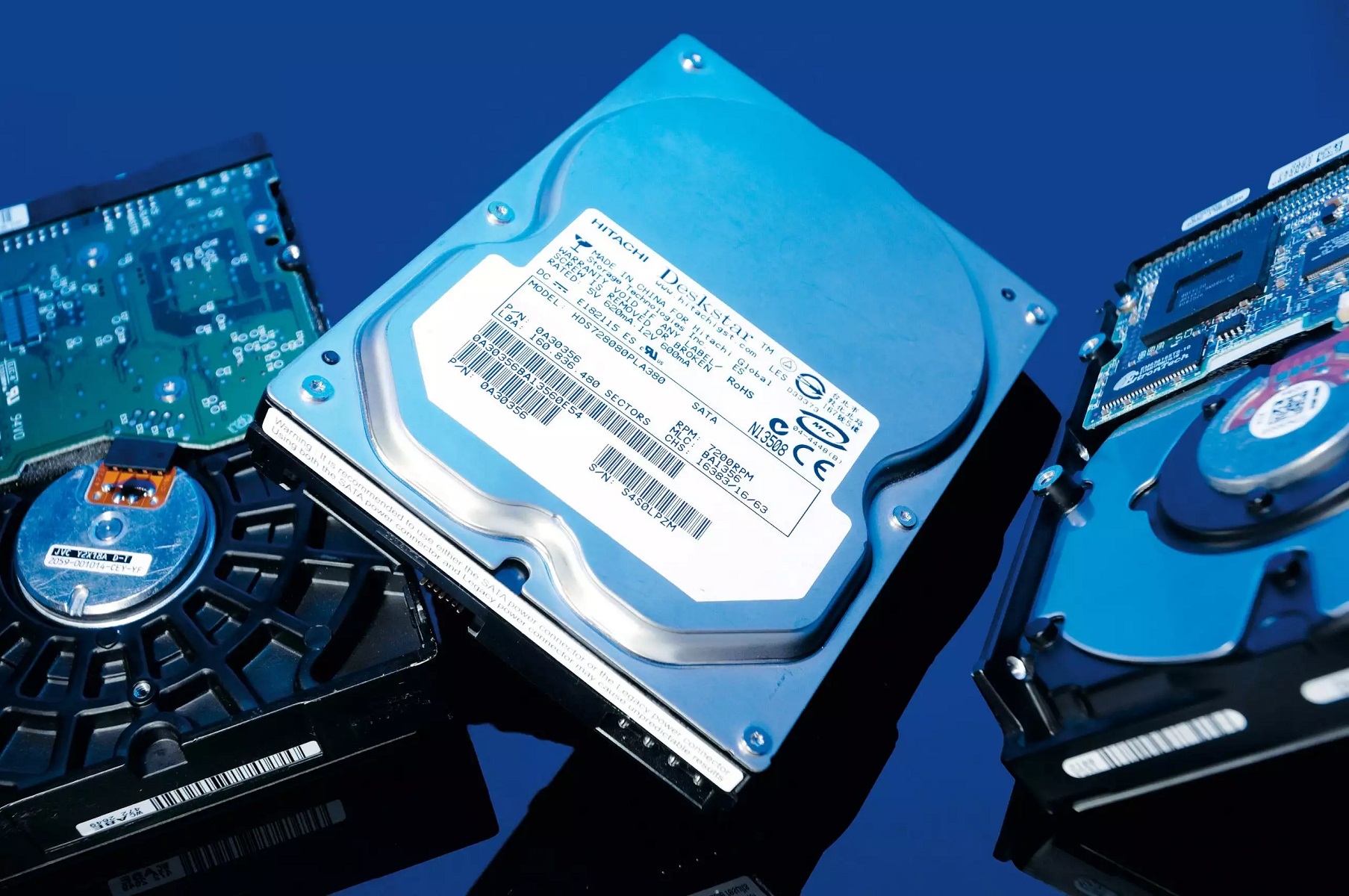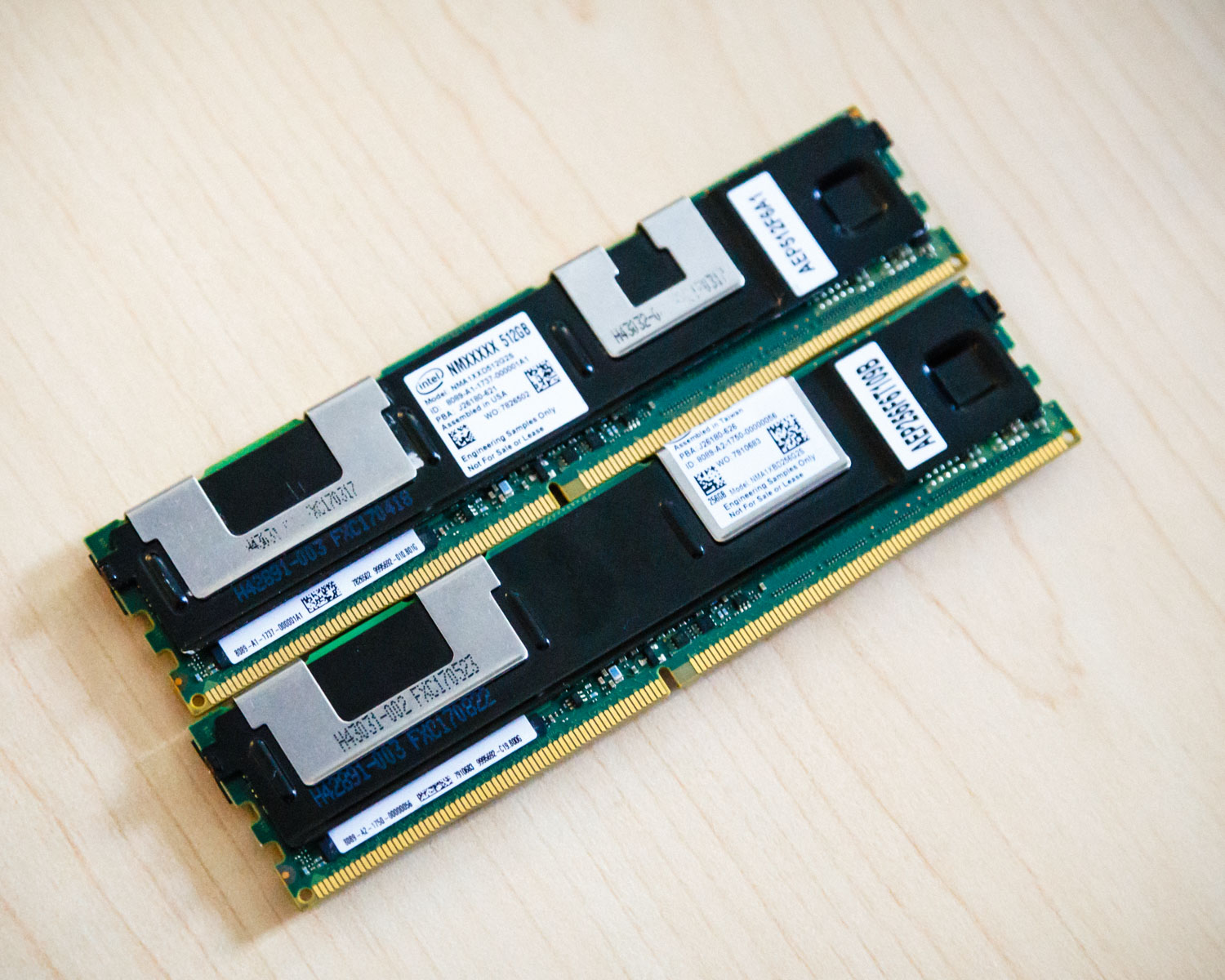

Articles
What Is Lun In Storage
Modified: January 21, 2024
Discover what LUN (Logical Unit Number) is in storage and how it relates to data storage. Learn about the importance of managing and organizing LUNs for efficient storage systems.
(Many of the links in this article redirect to a specific reviewed product. Your purchase of these products through affiliate links helps to generate commission for Storables.com, at no extra cost. Learn more)
Introduction
In the world of storage systems, managing data efficiently and effectively is of utmost importance. One of the key components of storage systems is the Logical Unit Number, commonly known as LUN. LUN plays a vital role in organizing and accessing data in storage networks.
A LUN is a unique identifier that is assigned to a specific set of data blocks on a storage device. It serves as the virtual representation of a physical storage resource, such as a disk array or a storage area network (SAN). With the help of LUN, storage systems can efficiently manage and allocate storage space to various applications and users.
The purpose of LUN in storage systems is to provide a logical address for data storage, making it easier to manage, access, and protect data. It acts as an abstraction layer between the physical storage devices and the higher-level applications or systems that utilize the storage.
Understanding the components, mapping and provisioning, management, and advantages of LUN in storage systems is crucial for IT professionals, storage administrators, and anyone involved in storage infrastructure. In this article, we will delve into the details of LUN, exploring its definition, purpose, components, mapping, provisioning, management, and the benefits it brings to the storage ecosystem.
Key Takeaways:
- LUNs are crucial for efficient data management in storage systems, providing logical addresses for storage resources. They offer benefits such as scalability, data protection, and simplified management, but require careful planning and proactive administration to overcome challenges.
- LUNs enable optimized storage infrastructure, offering advantages like efficient resource allocation, improved security, and application isolation. However, managing LUNs involves considerations such as capacity planning, performance optimization, and robust backup strategies to ensure reliable and secure data storage.
Read more: What Is A Tb Storage
Definition of LUN
A Logical Unit Number (LUN) is a logical identifier assigned to a specific set of data blocks on a storage device. It serves as a virtual representation of a physical storage resource, such as a disk array or a storage area network (SAN).
Think of a LUN as a unique address for a specific portion of storage space within a larger storage infrastructure. It allows storage systems to manage and organize data by providing a logical view of the physical storage resources. This logical view makes it easier to allocate, access, and manage data throughout the storage network.
Each LUN is typically associated with a specific volume or a logical partition within the storage device. It has its own set of characteristics, including capacity, access permissions, and protection mechanisms. These characteristics are set and controlled by the storage administrators to ensure optimal utilization and security of the data stored in the LUN.
Multiple LUNs can reside within a single physical storage device or span across multiple devices. Each LUN is identified by a unique identifier, often represented as a numerical value or an alphanumeric string. This identifier allows storage systems and applications to differentiate between different LUNs and access the corresponding data.
It’s important to note that a LUN does not directly represent physical storage devices or files. Rather, it provides a logical representation of the storage resources, allowing applications and systems to interact with them in a consistent and standardized manner.
In summary, a LUN is a logical identifier that represents a specific set of data blocks on a storage device. It allows for efficient management, allocation, and accessibility of data within storage networks, providing a crucial layer of abstraction between the physical storage resources and the higher-level applications and systems that use them.
Purpose of LUN in Storage Systems
The purpose of a Logical Unit Number (LUN) in storage systems is to provide a logical address for data storage, enabling efficient management, access, and protection of data. LUNs play a crucial role in storage infrastructure by offering several key benefits and functionalities.
One of the primary purposes of LUNs is to allocate and manage storage space for different applications and users within a storage network. By assigning specific LUNs to different entities, such as servers, virtual machines, or user accounts, storage administrators can control and organize the allocation of storage resources. This ensures that each application or user has access to the appropriate amount of storage without overlap or conflicts.
LUNs also provide a means of abstracting the underlying physical storage devices from the higher-level systems and applications. This abstraction allows for greater flexibility and scalability in the storage infrastructure. For example, if a physical storage device needs to be replaced or upgraded, the LUNs associated with that device can be easily migrated to a new device without impacting the applications and users that rely on that storage.
Another important purpose of LUNs is to enable efficient data access and retrieval. By assigning LUNs to specific sets of data, storage systems can quickly locate and retrieve the required information without scanning the entire storage infrastructure. This improves performance and reduces latency, ensuring that applications and users can access their data promptly.
LUNs also play a crucial role in data protection and disaster recovery strategies. Storage systems often employ various data protection techniques, such as replication, snapshots, or RAID configurations. By assigning LUNs to specific sets of data, these techniques can be applied selectively, protecting critical data while minimizing the impact on less important data.
Furthermore, LUNs facilitate storage management and administration tasks. Storage administrators can monitor and control the usage, performance, and health of each LUN individually, allowing for granular management of storage resources. This includes tasks such as capacity planning, performance tuning, and troubleshooting.
In summary, the purpose of LUNs in storage systems is to provide a logical address for data storage, enabling efficient management, access, and protection of data. LUNs allow for allocation and organization of storage resources, as well as abstraction of the underlying physical storage devices. They enable efficient data access, support data protection and disaster recovery strategies, and facilitate storage management and administration tasks.
Components of LUN
A Logical Unit Number (LUN) consists of several key components that define its characteristics and functionality within a storage system. Understanding these components is essential for storage administrators and IT professionals working with LUNs.
1. Identifier: Each LUN is assigned a unique identifier, which can be represented as a numerical value or an alphanumeric string. This identifier allows storage systems and applications to differentiate between different LUNs and access the corresponding data.
2. Capacity: The capacity of a LUN refers to the amount of storage space allocated to it. It determines the maximum amount of data that can be stored within the LUN. Storage administrators configure the capacity of a LUN based on the requirements of the applications or users associated with it.
3. Access Control: LUNs can have specific access permissions and control mechanisms to regulate who can read from or write to the data stored within them. Access control ensures data security and prevents unauthorized access or modification.
4. Protection Mechanisms: LUNs can be configured with various protection mechanisms to safeguard the data stored within them. This includes techniques such as RAID (Redundant Array of Independent Disks) configurations, which provide fault tolerance and data redundancy.
5. Association: LUNs are associated with specific volumes or logical partitions within the storage device. This association determines the location of the LUN within the storage infrastructure and allows for efficient management and organization of data.
6. Mapping: Mapping refers to the process of associating a LUN with a specific host or application. This ensures that the host or application has access to the data stored within the LUN. Mapping can be done statically or dynamically, depending on the requirements of the storage environment.
7. Provisioning: Provisioning involves allocating or provisioning storage space to a LUN. Storage administrators determine the amount of storage space required by the LUN and provision it accordingly. This ensures that the LUN has sufficient capacity to accommodate the data it needs to store.
8. Availability: LUNs can be configured for high availability, ensuring that the data stored within them remains accessible even in the event of a hardware failure or system outage. This is typically achieved through techniques such as failover clustering or replication.
These components work together to define the characteristics, functionality, and behavior of a LUN within a storage system. Storage administrators configure and manage these components to ensure optimal utilization, performance, and data protection for the LUNs in their infrastructure.
LUN Mapping and Provisioning
In storage systems, Logical Unit Number (LUN) mapping and provisioning are crucial processes that involve allocating storage resources and establishing connectivity between hosts and LUNs. These processes ensure that data can be accessed and managed effectively within a storage environment.
LUN Mapping: LUN mapping is the process of associating a LUN with a specific host or application. This allows the host or application to access the data stored within the LUN. Mapping can be done statically or dynamically, depending on the requirements of the storage environment.
In static mapping, the LUN is permanently associated with a specific host or application. The mapping configuration is set manually and remains unchanged until manually modified. This type of mapping is commonly used in environments where the host requirements and the storage configuration are stable and unlikely to change frequently.
In dynamic mapping, the association between the LUN and the host or application is established on-demand. This allows for greater flexibility and adaptability in the storage environment. Dynamic mapping is commonly used in virtualized environments or scenarios where the host requirements change frequently.
LUN Provisioning: LUN provisioning involves allocating or provisioning storage space to a LUN. Storage administrators determine the amount of storage space required by the LUN and provision it accordingly. There are different methods of LUN provisioning:
Thin Provisioning: Thin provisioning is a method where storage space is allocated dynamically based on the actual utilization. It allows storage administrators to allocate more capacity to a LUN than what is physically available. This provides flexibility and optimizes storage utilization by allocating storage resources on-demand, as needed.
Thick Provisioning: Thick provisioning is a method where storage space is allocated upfront for a LUN. The capacity allocated to the LUN is reserved and dedicated to it. This method ensures that the allocated storage space is immediately available, but it may result in lower storage efficiency as the allocated space may not be fully utilized.
Automated Provisioning: Automated provisioning involves using software tools or scripts to automate the process of provisioning LUNs. This streamlines and simplifies the provisioning process, reducing the manual effort and potential errors associated with manual provisioning.
Regardless of the provisioning method used, storage administrators need to balance the allocation of storage resources to meet the needs of the applications or users while ensuring efficient utilization of the available storage capacity.
LUN mapping and provisioning are critical processes in storage systems as they facilitate the connectivity between hosts/applications and the storage resources. They enable efficient data access, ensure proper allocation of storage space, and streamline the management of the storage infrastructure.
LUN stands for Logical Unit Number and is a unique identifier for a logical unit, such as a disk or a partition, in a storage area network (SAN). It is used to differentiate between different storage devices and is essential for managing and accessing storage resources in a SAN environment.
Read more: What Is A Cellar
LUN Masking
In storage systems, LUN Masking is a security mechanism that controls access to Logical Unit Numbers (LUNs) by selectively allowing or denying access to specific hosts or initiators. LUN Masking helps ensure that only authorized hosts or applications can access the data stored within a LUN, enhancing data security and preventing unauthorized access or modifications.
LUN Masking works by creating an access control list (ACL) that specifies which hosts or initiators are allowed to access a particular LUN. The ACL is typically configured by the storage administrator based on the specific requirements and security policies of the storage environment.
Here’s how LUN Masking works:
- Identification: Each host or initiator is identified by a unique identifier, such as a worldwide name (WWN) or an internet protocol (IP) address.
- ACL Configuration: The storage administrator creates an ACL that includes the identifiers of the authorized hosts or initiators that should have access to a specific LUN.
- Masking: The LUN Masking process involves applying the ACL to the LUN, effectively “masking” it from unauthorized hosts or initiators. Only the hosts or initiators listed in the ACL will be able to discover or access the LUN.
- Access Control: When a host or initiator attempts to access a LUN, the storage system checks the ACL to determine if the host or initiator is authorized. If the identifier matches an entry in the ACL, access is granted. If there is no matching entry, access is denied.
LUN Masking adds an extra layer of security to storage systems by limiting access to sensitive data. It helps prevent unauthorized hosts from accessing or modifying critical information, thereby reducing the risk of data breaches or unauthorized data loss.
LUN Masking can be implemented at different levels in the storage architecture. For example, it can be applied at the storage array level, the fabric or network level, or even at the host level using third-party software or operating system configurations.
It’s important to note that LUN Masking is not the only security measure for protecting data in storage systems. It should be used in conjunction with other security practices, such as zoning, encryption, and authentication protocols, to create a robust and comprehensive security framework for storage environments.
In summary, LUN Masking is a security mechanism that controls access to LUNs by selectively allowing or denying access to specific hosts or initiators. By configuring access control lists and enforcing access restrictions, LUN Masking enhances data security and prevents unauthorized access to sensitive information stored within LUNs.
LUN Management and Administration
In storage systems, effective management and administration of Logical Unit Numbers (LUNs) are essential for maintaining an optimized and reliable storage infrastructure. LUN management involves various tasks and processes aimed at efficiently allocating, monitoring, and maintaining the storage resources associated with LUNs.
Here are some key aspects of LUN management and administration:
Allocation: LUN allocation is the process of provisioning and assigning storage space to a LUN. Storage administrators determine the capacity requirements of the LUN and allocate the necessary storage resources accordingly. This ensures that the LUN has sufficient space to accommodate the data it needs to store.
Monitoring and Performance Tuning: Storage administrators regularly monitor the performance of LUNs to ensure optimal storage efficiency and responsiveness. They analyze performance metrics, such as throughput, latency, and I/O operations, to identify any bottlenecks or performance issues. Based on the analysis, they can fine-tune the configuration and optimize the LUNs for better performance.
Capacity Planning: Capacity planning involves analyzing the storage usage and predicting future storage requirements. By monitoring the storage consumption of LUNs, administrators can estimate when additional storage resources will be needed and plan for capacity expansion accordingly. This helps prevent storage shortages and allows for smooth scalability.
Security and Access Control: Storage administrators are responsible for implementing and managing security measures, including access control and LUN masking. They configure access control lists (ACLs) to restrict the access to LUNs and ensure that only authorized hosts or initiators can access the data stored within them. Regular audits and updates to access permissions may be necessary to maintain data security.
Backup and Disaster Recovery: LUN management includes ensuring appropriate backup and disaster recovery strategies for LUNs and their associated data. Administrators implement regular backups, snapshots, replication, and other data protection mechanisms to safeguard against data loss or corruption. They also test and verify the effectiveness of the disaster recovery plan to ensure quick and smooth recovery in the event of a system failure or accidental data loss.
Documentation and Reporting: Keeping accurate documentation and generating reports on LUNs and their configurations is a crucial aspect of LUN management. Administrators maintain records of LUN provisioning details, mapping configurations, access control settings, and any modifications made to the LUNs. This documentation helps in troubleshooting, auditing, and compliance with regulatory requirements.
Effective LUN management and administration play a vital role in maintaining the performance, reliability, and security of storage systems. Storage administrators need to stay abreast of the latest industry trends, best practices, and emerging technologies to ensure efficient and optimal management of LUNs within the storage infrastructure.
In summary, LUN management and administration involve various tasks and processes such as allocation, monitoring, performance tuning, capacity planning, security, backup, and documentation. Proactive management ensures the reliability, performance, and security of LUNs within the storage environment.
Advantages and Benefits of LUN in Storage
Logical Unit Numbers (LUNs) bring several advantages and benefits to storage systems, enabling efficient management, access, and protection of data. Understanding these advantages is crucial for storage administrators and IT professionals working with storage infrastructure.
Here are some key advantages and benefits of LUN in storage:
1. Efficient Resource Allocation: LUNs allow storage administrators to allocate storage resources to specific applications or users. By assigning dedicated LUNs, administrators can ensure optimal utilization of storage capacity, prevent resource conflicts, and facilitate efficient data management.
2. Data Organization and Access: LUNs provide a logical representation of storage resources, allowing for organized and efficient access to data. Applications or users can access the data stored within LUNs using standardized protocols, making it easier to manage and locate specific information when needed.
3. Scalability and Flexibility: LUNs enable scalable storage solutions by providing an abstraction layer between the physical storage devices and the higher-level systems. Administrators can easily add or remove LUNs as storage needs change, allowing for seamless scalability and adaptability in the storage infrastructure.
4. Data Protection and Recovery: LUNs play a vital role in data protection and recovery strategies. By assigning LUNs to specific sets of data, administrators can apply data protection mechanisms such as replication, snapshots, and backups selectively. In the event of data loss or corruption, these mechanisms help restore the data quickly, minimizing downtime and ensuring business continuity.
5. Performance Optimization: LUNs allow administrators to optimize storage performance by fine-tuning configurations for specific applications or workloads. By analyzing performance metrics and adjusting storage parameters, administrators can maximize throughput, minimize latency, and ensure optimal performance for critical applications.
6. Improved Security: LUNs contribute to enhanced data security by enabling access control mechanisms and LUN masking. Administrators can restrict access to sensitive data by configuring access control lists and only allowing authorized hosts or initiators to access specific LUNs. This helps prevent unauthorized access and protects critical information.
7. Simplified Management: With LUNs, administrators can effectively manage and organize storage resources. LUN-based management allows for centralized control and monitoring of storage capacities, performance, and data protection. It simplifies administrative tasks, reduces complexity, and improves overall efficiency in storage management.
8. Application Isolation: LUNs provide a means of isolating and segregating applications or workloads within the storage infrastructure. By assigning dedicated LUNs to each application, administrators can prevent resource contention and ensure that the performance of one application does not affect others. This isolation enhances application performance, stability, and reliability.
In summary, LUNs offer numerous advantages and benefits in storage systems, including efficient resource allocation, organized data access, scalability, data protection, performance optimization, improved security, simplified management, and application isolation. Leveraging these benefits helps optimize storage infrastructure and provides a solid foundation for reliable and high-performing data storage.
Challenges and Considerations with LUN in Storage
While Logical Unit Numbers (LUNs) bring significant advantages to storage systems, there are several challenges and considerations that storage administrators and IT professionals need to be aware of. Understanding these challenges is crucial for effectively managing LUNs and mitigating potential issues.
1. Capacity Planning: LUNs require careful capacity planning to ensure optimal utilization of storage resources. Poorly planned capacity allocation may result in wasted space or insufficient storage for applications, leading to performance degradation or resource limitations. Regular monitoring and forecasting of storage needs are essential to avoid these challenges.
2. Performance Management: LUN performance can be impacted by factors such as disk contention, bottlenecks, or misconfigurations. Storage administrators need to monitor and optimize LUN performance through performance tuning, load balancing, and implementing appropriate caching and tiering strategies.
3. Data Security and Access: While LUNs can enhance data security through features like access control and LUN masking, it is important to ensure that access permissions and security measures are configured correctly. Failure to properly implement security policies can lead to unauthorized access, data breaches, or data loss.
4. Backup and Disaster Recovery: LUNs require robust backup and disaster recovery strategies to protect against data loss and ensure business continuity. Failure to regularly back up LUN data or test the effectiveness of disaster recovery plans can put critical data at risk. Administrators need to regularly test and update backup procedures and establish a solid disaster recovery framework.
5. Complexity and Manageability: As the number of LUNs increases in a storage environment, the complexity of management and administration can also escalate. Administrators need to effectively organize and categorize LUNs, implement efficient monitoring and reporting mechanisms, and leverage automation tools to minimize manual effort and simplify management processes.
6. Compatibility and Interoperability: Storage systems can involve a variety of hardware and software components from different vendors. Ensuring compatibility and interoperability between these components, including LUNs and storage devices, is crucial to avoid compatibility issues and ensure seamless integration and operation.
7. Performance Isolation: In environments with shared storage resources, it is important to consider the impact of one LUN’s performance on other LUNs. Resource-intensive applications or workloads on one LUN can potentially affect the performance of other LUNs. Proper workload balancing and performance isolation mechanisms should be implemented to prevent these challenges.
8. Monitoring and Troubleshooting: Monitoring and troubleshooting LUN-related issues can be complex, especially in large storage environments. Administrators must implement comprehensive monitoring tools, establish alert systems, and have a solid understanding of troubleshooting techniques to identify and resolve performance issues or disruptions promptly.
In summary, challenges with LUN in storage include capacity planning, performance management, data security, backup and recovery, complexity, compatibility, performance isolation, and monitoring and troubleshooting. Addressing these considerations and challenges ensures efficient and reliable operation of LUNs within the storage infrastructure.
Read more: What Are Racks
Conclusion
Logical Unit Numbers (LUNs) play a pivotal role in storage systems, providing a logical address for data storage and enabling efficient management, access, and protection of data. Throughout this article, we have explored the definition, purpose, components, mapping, provisioning, management, and benefits of LUNs in storage environments.
LUNs offer numerous advantages in storage systems, such as efficient resource allocation, organized data access, scalability, data protection, performance optimization, improved security, simplified management, and application isolation. These benefits empower storage administrators to optimize storage infrastructure, ensure data integrity, enhance performance, and facilitate seamless scalability.
However, managing LUNs comes with its own set of challenges and considerations. Storage administrators need to carefully plan the capacity, optimize performance, implement robust security measures, establish reliable backup and disaster recovery strategies, address complexity and interoperability, ensure performance isolation, and effectively monitor and troubleshoot issues related to LUNs.
By understanding and addressing these challenges, storage administrators can overcome potential hurdles and build a robust and reliable storage infrastructure. Proactive management and administration of LUNs are vital for maintaining optimal performance, data protection, and security within the storage environment.
In conclusion, LUNs are essential components of storage systems, offering a logical representation of storage resources and enabling efficient data management and access. Leveraging the benefits of LUNs while effectively managing their challenges empowers organizations to achieve reliable, scalable, and secure data storage capabilities.
Frequently Asked Questions about What Is Lun In Storage
Was this page helpful?
At Storables.com, we guarantee accurate and reliable information. Our content, validated by Expert Board Contributors, is crafted following stringent Editorial Policies. We're committed to providing you with well-researched, expert-backed insights for all your informational needs.














0 thoughts on “What Is Lun In Storage”